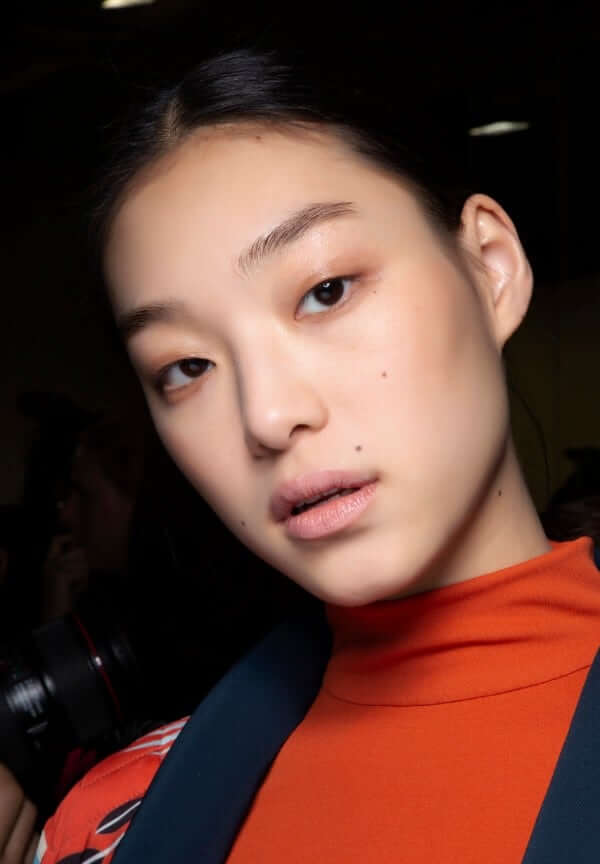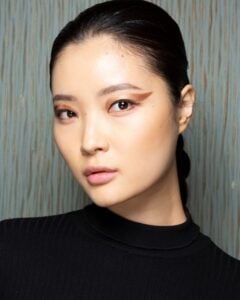You may not be one to spend 30 minutes to an hour in front of a vanity mirror before leaving your home but, chances are, that you own a lip gloss or two. Whether you use it for hydration, a little protection from the sun, or they’re your go-to for color with a bit of shine, lip gloss is a staple for most of us.
But how does lip gloss achieve all of those things at once? That is, what is lip gloss made of that gives it moisturizing power, color, shine, and protection? Not every gloss accomplishes all of those things, but they all accomplish at least one. And we’re going to tell you how with this ingredient break down. S
WHAT IS LIP GLOSS MADE OF?
Of course, not all lip gloss is created equal. Depending on the brand and the type, the answer to “what is lip gloss made of” will vary. With that said, there are some components that are found across most formulas and you can find out more about these below.
EMOLLIENTS
Lip gloss and lipstick are two very different lip products. One of the big things that sets them apart is that lipstick uses more wax, while lip gloss relies mostly on emollients.
Emollients are typically oils. Emollients give lip gloss its more gel-like texture. These are what make it slick, wet-looking, and shiny. They’re also responsible for the softening and soothing characteristic of some lip gloss, and still other emollient ingredients will prevent the loss of moisture and even act as moisturizing in and of itself.
Emollients may be natural oils, or they may be synthetic. Better quality and/or natural and organic products tend to use the former over the latter, making them more expensive but well worth their cost. These include oils such as coconut oil or jojoba oil.
WAXES
More commonly found in lipstick, some lip gloss do contain wax. This is typically used as a medium for mixing other ingredients, but in more sticky lip glosses with longer last, there’s usually a bit of wax involved as well.
Wax can also help moisturize and seal in moisturize, similar to an emollient. Waxes used for that purpose are carnauba and beeswax, shea butter, lanolin, and petroleum.
THICKENERS
Thickeners can be a balance of oils, waxes, clays, and other natural or synthetic ingredients that help the lip gloss stay on. Without these ingredients, the lip gloss would be far too liquid and wouldn’t have any staying power at all. Thickeners also prevent lip gloss from dripping or smearing, so it gives it hold and composition.
COLOR
Some lip gloss is clear, some are super shiny, some are colored, and others are simply tinted. To get these various color effects, different ingredients are employed.
For colored and tinted lip gloss, ingredients include coloring agents and pigments. These can include traditional dyes like the ones labeled Red 6723 on the ingredients label. Or, in more natural and organic products, you might find natural dying elements such as fruit extracts.
To achieve a glittery finish, many lip glosses are made with iron oxide or mica. Both are naturally occurring mineral deposits that contain pigment and they’re used in a lot of your cosmetic products. Have a look at just about any shadow or bronzer with a bit of glitter, and you’ll find one of these two ingredients.
FRAGRANCE
As a result of all mixing all the natural and synthetic ingredients that lip gloss is made out of, the end product doesn’t smell so great. To cover up that not-so-pleasant scent, many brands add a fragrance. This also helps to cover up any smell that results from the package being opened for a long time and exposed to air. And, like most other ingredients, fragrances can be natural or synthetic.
MILD ANESTHETICS
Medicated lip gloss might contain ingredients that help to soothe irritation on your lips. These include mild anesthetic ingredients like menthol, mint, and camphor.
SUNSCREEN (SPF)
Sunblock is actually an extremely important ingredient. If the skin on your face is already pretty delicate, then the thinner skin on your lips is even more so and requires protection.
Your lips are susceptible to damage from the UV rays emitted by the sun. Meaning that they can get sunburned, and quite easily at that.
Even if you manage to avoid the discomfort of a sunburn on your lips, exposure to the sun destroys collagen and, over time, that will cause your lips to thin. On top of all that, the wind and other environmental factors can also have a drying and chapping effect on your lips.
If those aren’t enough reasons to put sunblock in lip gloss, we don’t know what is. In fact, some brands take this protection even further by adding ingredients like vitamin E, which helps to protect collagen and neutralize free radicals.
WHAT INGREDIENTS SHOULD YOU AVOID?
Now that you know what lip glosses are made of (at least) what they should be made of… if you have allergies to certain ingredients, of course, you should try to avoid lip glosses containing those ingredients. The most common allergens found in cosmetic ingredients include natural rubber, fragrances, preservatives, dyes, and metals.
PARABENS
Parabens are another big allergen and an even bigger problem for your overall health. They’re a common preservative in everything from your shampoo to your lip gloss but they’re also thought to be harmful to your hormonal balance and your reproductive health, among other things. You should avoid parabens in any product you use.
FRAGRANCES
Namely, synthetic fragrances – are used to make your lip gloss smell better, but they’re a known allergen. They’re also sensitizing, which means that, over time, your skin can develop irritations as a result of their use. And this is true for all skin types.
If you’re vegan or vegetarian, you might also consider avoiding animal-based ingredients or products that aren’t labeled “cruelty-free”.
Consider looking at our best organic lip gloss article, if you’re looking for a clean option to be applying to your lips!.
FINAL THOUGHTS
Lip gloss is a relatively simple product that even the simplest makeup user likely keeps in their arsenal. But the ingredient list of lip gloss is anything but simple. It involves emollients, thickeners, coloring agents in both natural and synthetic variations. While every formula is different, the one thing they all share in common is making your lips look slick and smooth in a few easy strokes.



